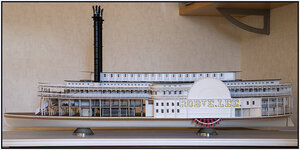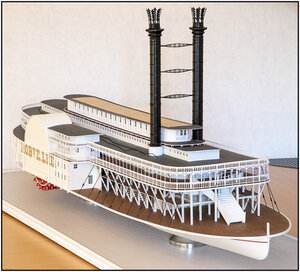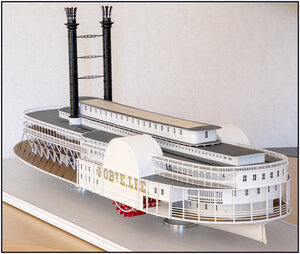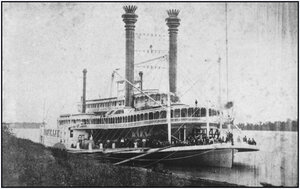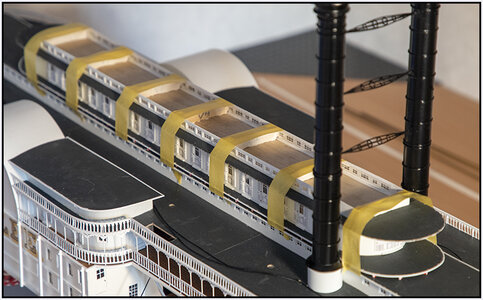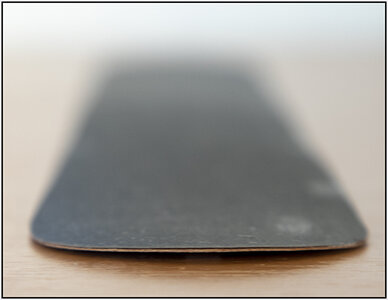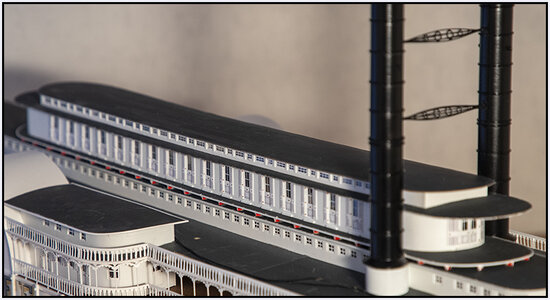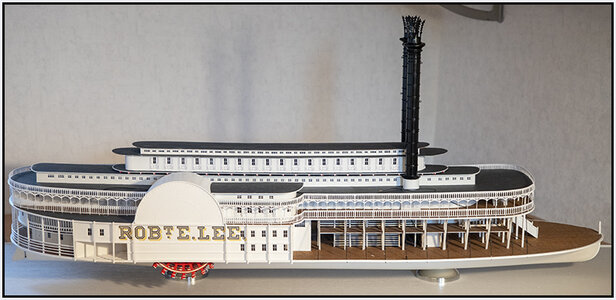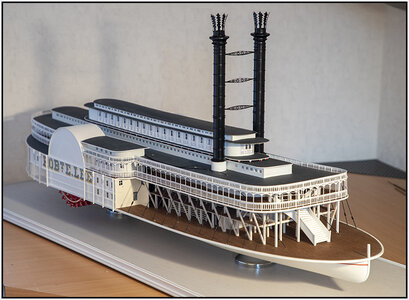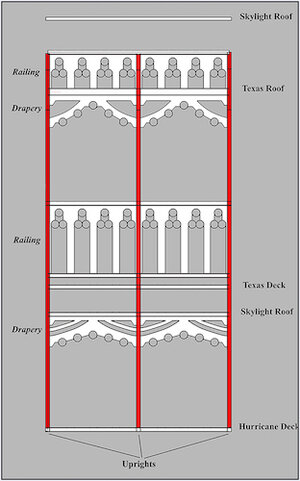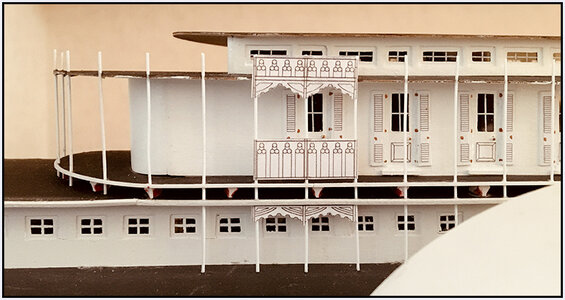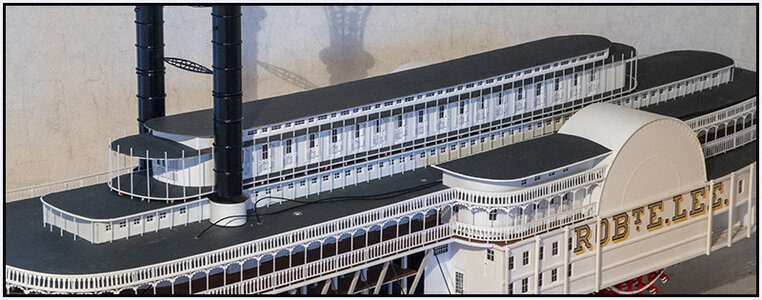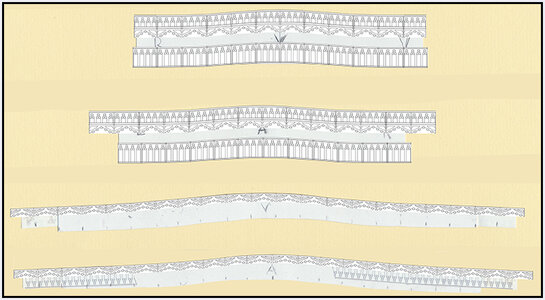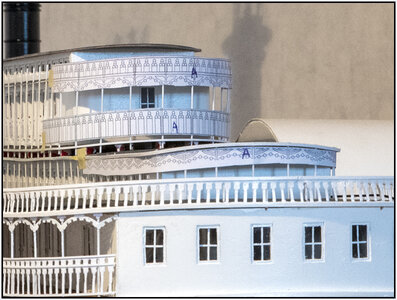Sometimes turn off your mind and keep going ...... production time ……..
Still step 21:
Eventually all the panels and louvres placed:
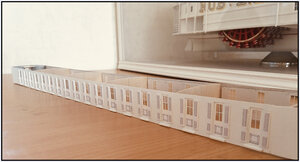
And the double wide doors at the front:
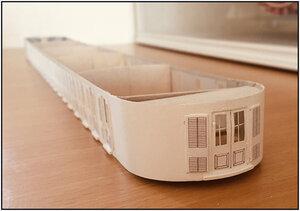
Macro-pictures are unforgivable! More to come ....
22:
Holes drilled for......
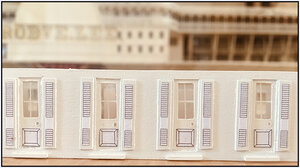
23:
...... the doorknobs.
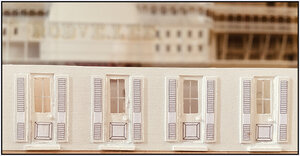
24:
And some 'copper batter' affixed to the doorknob of the door, as louvre-doorsknobs and each door also equipped with 3 hinges.
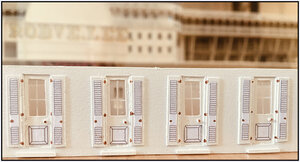
25:
And then the Texas can be in place. With wood-glue that takes a while to harden.
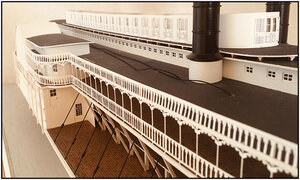
And finally by this 25-steps-Texas, the roof on it!
Both pieces under pressure. So they can put themselves in places with the 2 curves: the sheer and the camber.
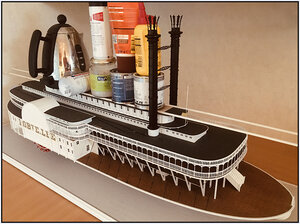
At the front and back an Evergreen rod is placed to align the roof with the pre-drilled holes in the length direction and at odds with the waterline. With left and right, front and rear also a brass rod placed to align the roof well during the gluing.
The 2 length strips on the sides of the roof, bridge the weights and press the roof into its camber.
Tomorrow, when everything is dry, I will make by daylight some pictures with the Canon on the tripod.
Regards, Peter
Still step 21:
Eventually all the panels and louvres placed:

And the double wide doors at the front:

Macro-pictures are unforgivable! More to come ....
22:
Holes drilled for......

23:
...... the doorknobs.

24:
And some 'copper batter' affixed to the doorknob of the door, as louvre-doorsknobs and each door also equipped with 3 hinges.

25:
And then the Texas can be in place. With wood-glue that takes a while to harden.

And finally by this 25-steps-Texas, the roof on it!
Both pieces under pressure. So they can put themselves in places with the 2 curves: the sheer and the camber.

At the front and back an Evergreen rod is placed to align the roof with the pre-drilled holes in the length direction and at odds with the waterline. With left and right, front and rear also a brass rod placed to align the roof well during the gluing.
The 2 length strips on the sides of the roof, bridge the weights and press the roof into its camber.
Tomorrow, when everything is dry, I will make by daylight some pictures with the Canon on the tripod.
Regards, Peter
Last edited:


